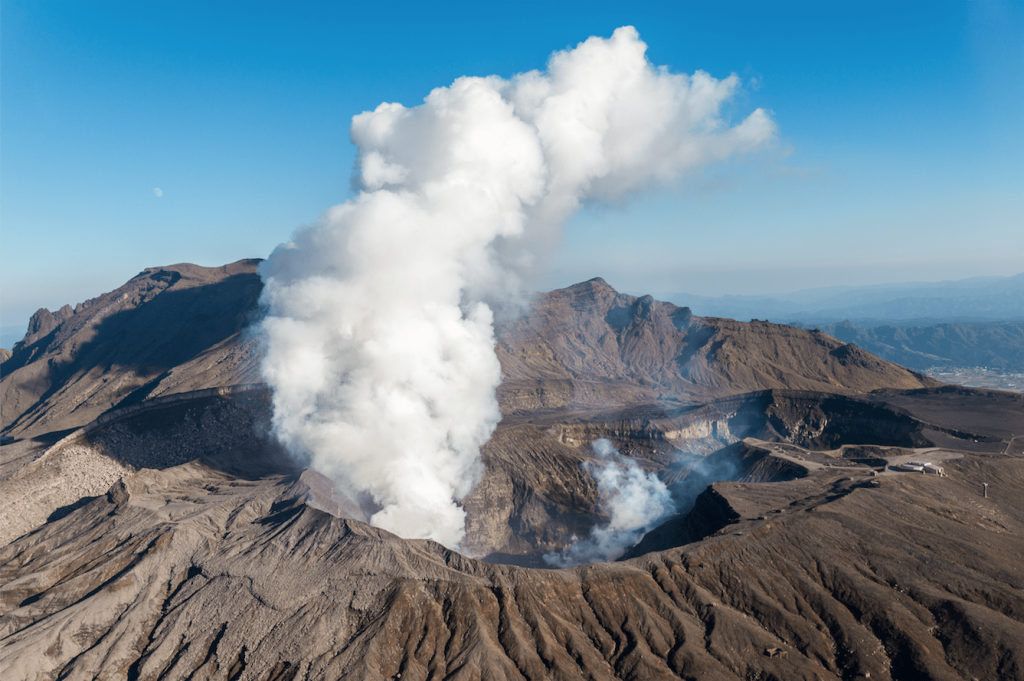Kyushu, the southernmost of Japan’s four main islands, is a fascinating destination offering a diverse range of sights and experiences. Indeed, diversity is a watchword for Kyushu in ways that no other part of Japan can claim. For this article, we’ve teamed up with the Kyushu Tourism Promotion Organization to introduce that diversity by focusing on three central themes – energy, fertility (in the sense of abundance) and gateway – to provide you with an overview of some of the best that Kyushu has to offer.
The Energy of Kyushu
Volcanoes
Kyushu is a land that was formed by, and continues to be shaped by volcanoes. Although the eruptions of undersea volcanoes accumulated to create and shape Kyushu beginning millions of years ago, even today there are nine active volcano systems in Kyushu, two of them regarded as among the most active in the world. Many people in Kyushu make their homes within sight of these active volcanoes, living and working alongside them. Kyushu people have great respect for the power of volcanoes and recognize the potential danger. At the same time, they are grateful for the abundance the volcanoes provide: fertile soil, plentiful water, even weather patterns that enable them to raise quality fruit, vegetables and livestock and otherwise enjoy a wholesome and delightful natural world.
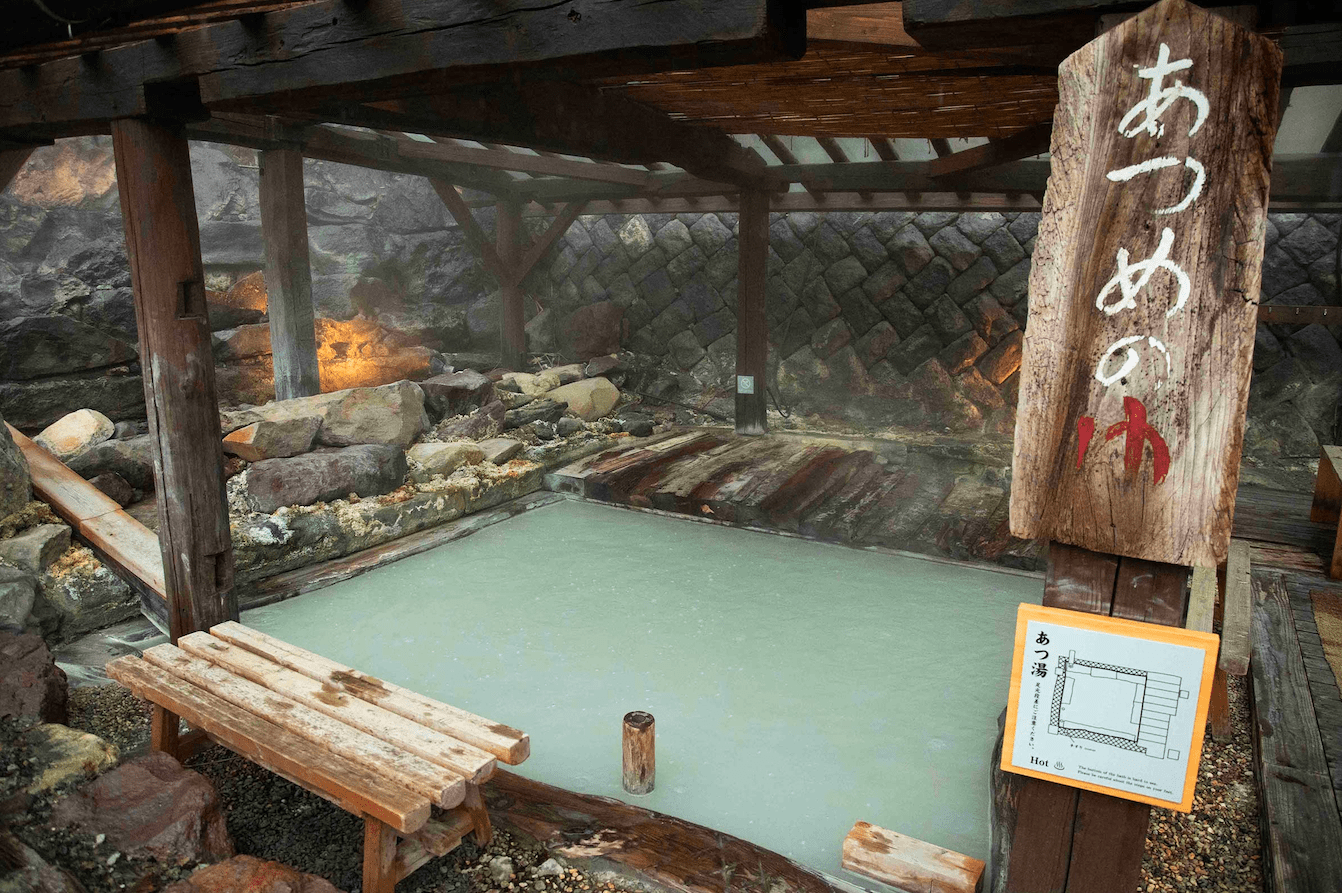
Photo by Allan Abani
Onsen
Another natural wonder brought about by geothermal forces is the hot springs. In fact, one-third of the natural hot springs of Japan are located in Kyushu. Every minute of every day, 695,000 liters of onsen water reaches the surface somewhere in Kyushu. With so many of Japan’s onsens located in Kyushu, you’ll be spoiled for choice.
“With so many of Japan’s onsens located in Kyushu, you’ll be spoiled for choice”
In Fukuoka Prefecture, one of the largest onsen towns is Harazuru Onsen, located in the southeast of the prefecture, on the banks of the Chikugo River. According to legend, the hot spring was first identified nearly a century and a half ago by a fisherman on the river who noticed that there was one particular spot on the riverbank where snow never accumulated.
Saga’s Ureshino Onsen is particularly historic, said to have been visited by Empress Jingu (169-269AD) after she returned from campaigning in Korea. She is said to have declared “ah, ureshino” (Ah, I am happy) when bathing here, giving the area its name.
The most geologically active part of Nagasaki Prefecture is the Shimabara Peninsula where the Unzen volcanoes are located. It follows that there are excellent onsen in this area. The two best known onsen districts are Unzen Onsen and Obama Onsen.
As the home of Mt Aso, Japan’s most volcanically active area, Kumamoto has plenty of onsens, including many located inside the Aso caldera. One of the largest onsen areas inside the caldera is Uchinomaki Onsen in the northwest with six different hot spring water sources.
Oita is often referred to as the onsen capital of Japan, and with good reason. This prefecture has more hot springs and produces more onsen water than anywhere else in Japan. Oita’s best known onsen town is coastal Beppu, where over 100,000 kiloliters of onsen water gushes from 2,700 different sources every day. Actually eight different primary hot spring have been identified in Beppu, so that the area is often referred to as “Beppu Hatto” (eight onsen resort).
Kagoshima is also home to plentiful hot springs, thanks to its many active volcanoes. Kirishima Onsen and Kirishima Shrine Onsen are two onsen towns high in the Kirishima mountains, where visitors can enjoy hiking and other outdoor activities by day and relax in a soothing mineral bath at night.
Miyazaki is the most tropical of all Kyushu’s prefectures, yet it shares the Kirishima mountains with Kagoshima. And just across the northern prefectural border from Kagoshima is Ebino Kogen, where Miyazaki can boast the highest altitude onsen resort in Kyushu.
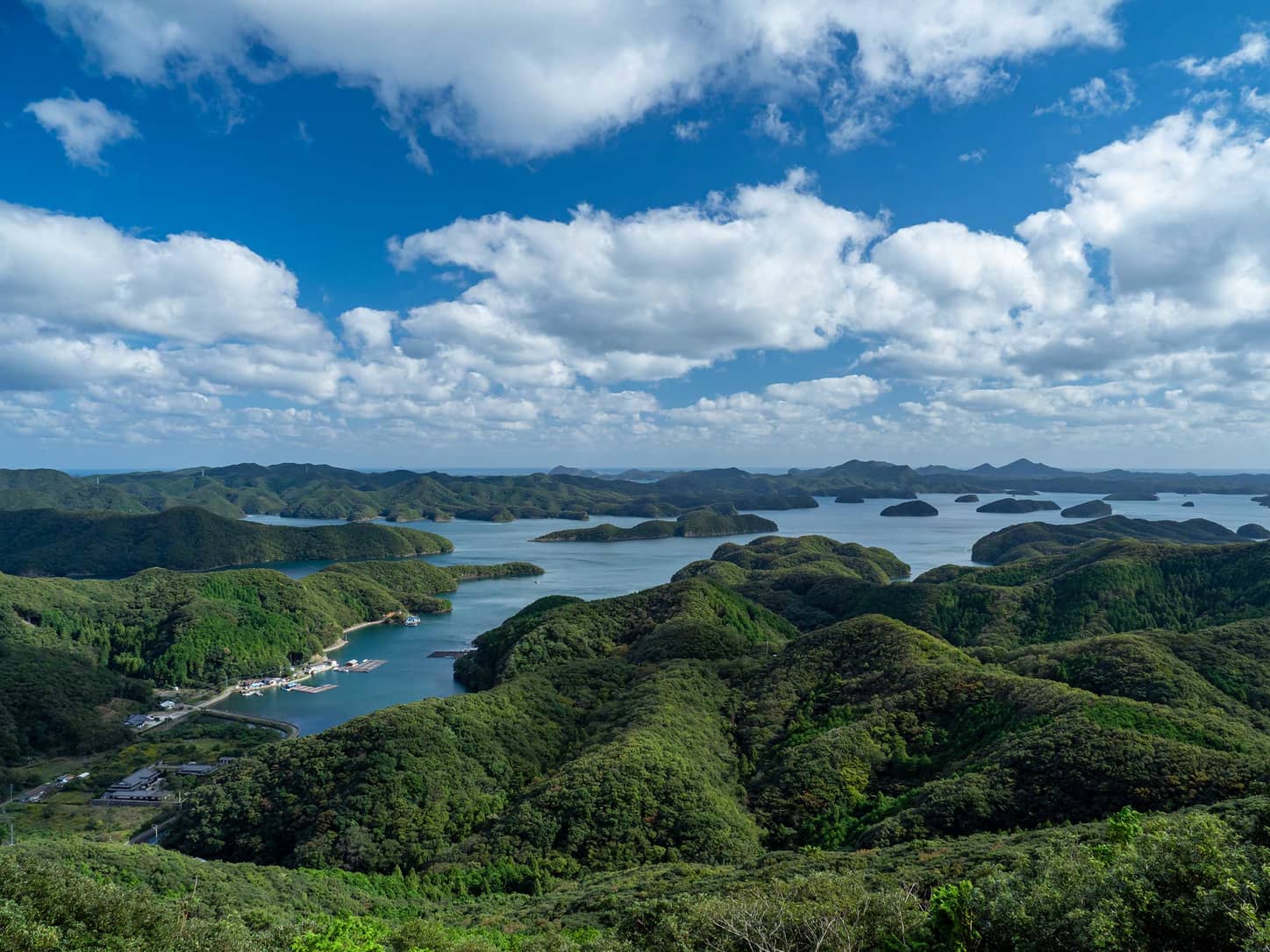
Photo: Shutterstock
The Fertility (Abundance) of Kyushu
Kyushu is volcanic, so of course there are lots of hills and mountains. Often when viewed from a distance, there are gentle, rolling foothills and farther away, layers of mountains, getting progressively higher, their flanks folding on each other and covered with lush vegetation in various shades of green, thanks to evergreen, deciduous and bamboo trees. Depending on the season, the greenery is tempered with other colors: delicate white-pink of mountain cherry trees in spring and just a month later, darker pink to orange azalea blossoms, often in riotous abundance. During fall, the rich gold, brown and red of autumn leaves provide a new visual feast.
“In some areas, there are pale, sandy beaches, while in other places, rocky crags seem to tumble straight into the sea”
Kyushu’s coastlines are often particularly picturesque. In some areas, there are pale, sandy beaches, while in other places, rocky crags seem to tumble straight into the sea, a scenic riot of colors as the green of native trees gives way to black jagged rocks, which in turn, plunges straight into the blue of the ocean or the white of the breaking waves.
Indeed, water is an element that helps define Kyushu. As an island, the ocean separates it from the rest of Japan, as well as from the rest of the world. Yet its proximity to the Asian mainland has enabled it to act as a gateway between the rest of the world and the rest of Japan. At the same time, it is the abundance of freshwater tumbling out of the mountains that contributes to Kyushu’s agricultural richness.
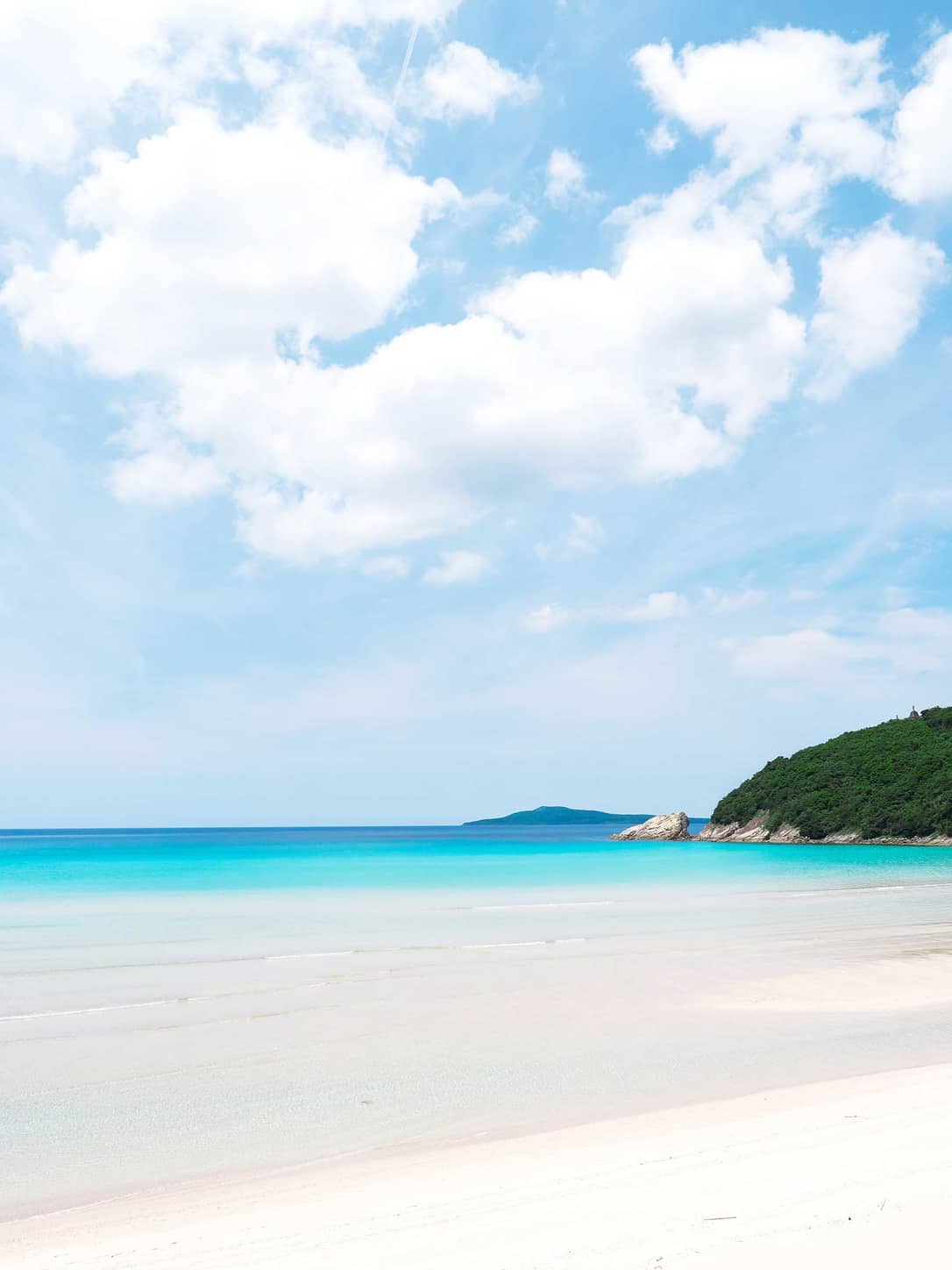
Photo: Shutterstock
Ocean & Islands
Kyushu encompasses not only the southernmost of Japan’s four main islands but also the myriad of small islands that surround it. There is no part of Kyushu that is not impacted by its proximity to the sea, but for the smaller islands, it is the ocean that dictates the rhythms and pace of daily life and provides many wonderful experiences for visitors.
Nagasaki Prefecture, in the northwest of Kyushu, includes more islands than any other prefecture in Japan: 971. Several of these islands are quite large and have developed their own fascinating customs and cultures. These include the border islands of Iki, Tsushima and Goto. The majority of Tsushima people are involved in fishing and farming. Their island is 90% steep mountains and deep forests.
Other islands include Kumamoto Prefecture’s Amakusa Islands which are nestled below the Shimabara Peninsula and boast the pretty fishing village of Sakitsu, and Kujukushima Islands which are famed for pearl farming and oyster production.
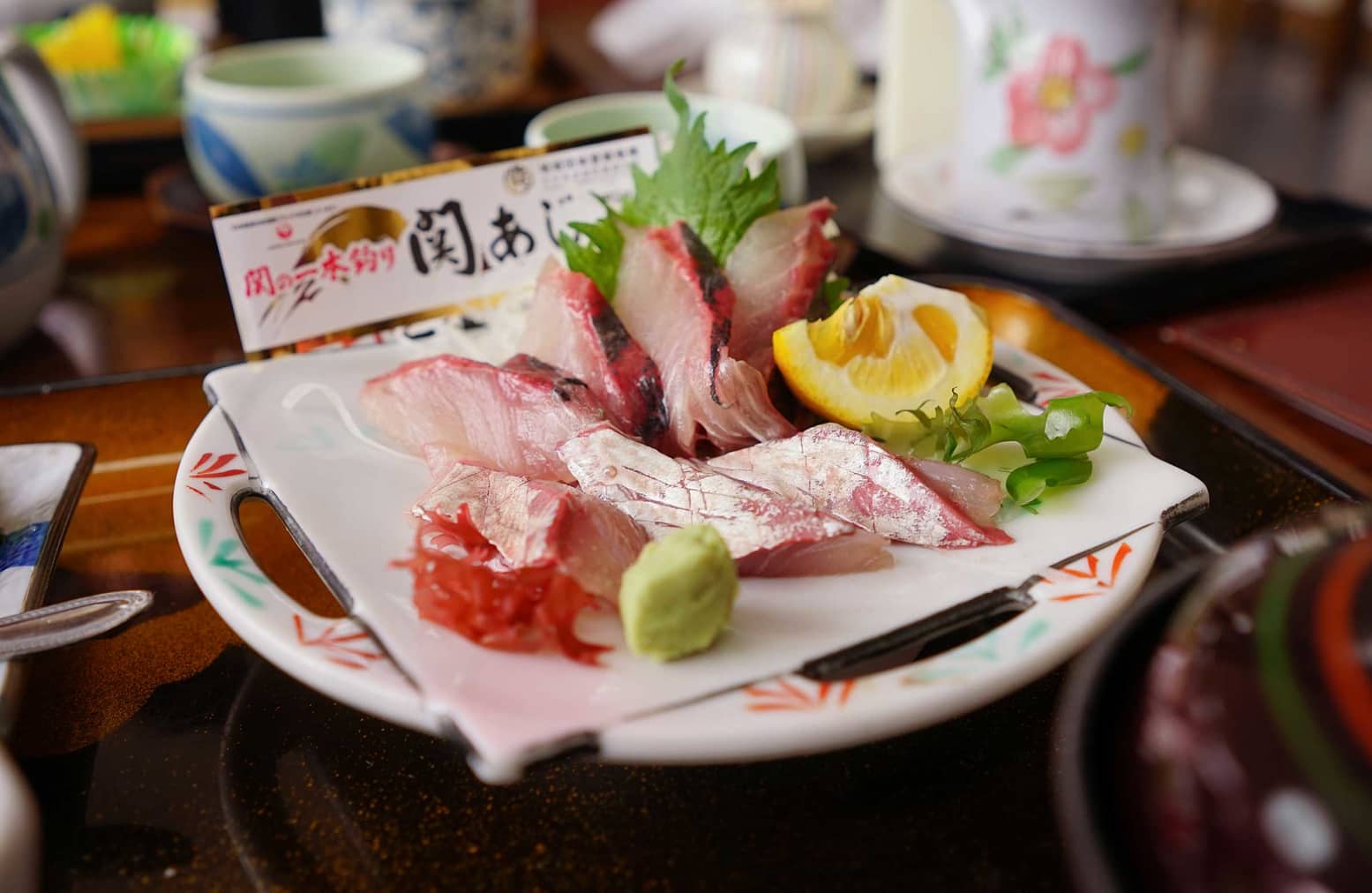
Photo: Shutterstock
Cuisine
As an island bounded by several different seas, including the Genkai Sea, the East China Sea, the Pacific Ocean and the Seto Inland Sea, it stands to reason that fish would be an important feature of Kyushu’s cuisine. Each sea has its own currents, salinity, and ecosystem. This impacts the type of fish caught in different parts of Kyushu and the flavors of the fish.
Another key aspect of flavor is how the fish are caught and handled. At the Saganoseki fishing port on Kyushu’s Oita coast, for example, strict standards ensure that the fish processed through the port are nothing but the best and most flavorful to be had, and they are branded to show this.
“Abalone are caught by ama, free divers who swim down to the bottom of the sea”
At the Munakata fishing port in Fukuoka Prefecture, the fishermen are similarly strict in their methods, predominantly line fishing. Munakata is particularly known for its fugu blowfish which, if not handled properly, can become poisonous. Abalone is another catch for which Munakata is well known. Abalone are caught by ama, free divers who swim down to the bottom of the sea to cut abalone from the rocks or catch crustaceans such as crabs.
Not all of Kyushu’s popular food comes from the sea. Whether sourced from ocean or land, the prevailing theme for food across Kyushu is fresh, top quality ingredients produced and prepared with love and pride.
Of course, good food is often enhanced by good drink and Kyushu is blessed with an abundance of quality green teas, sake and shochu.
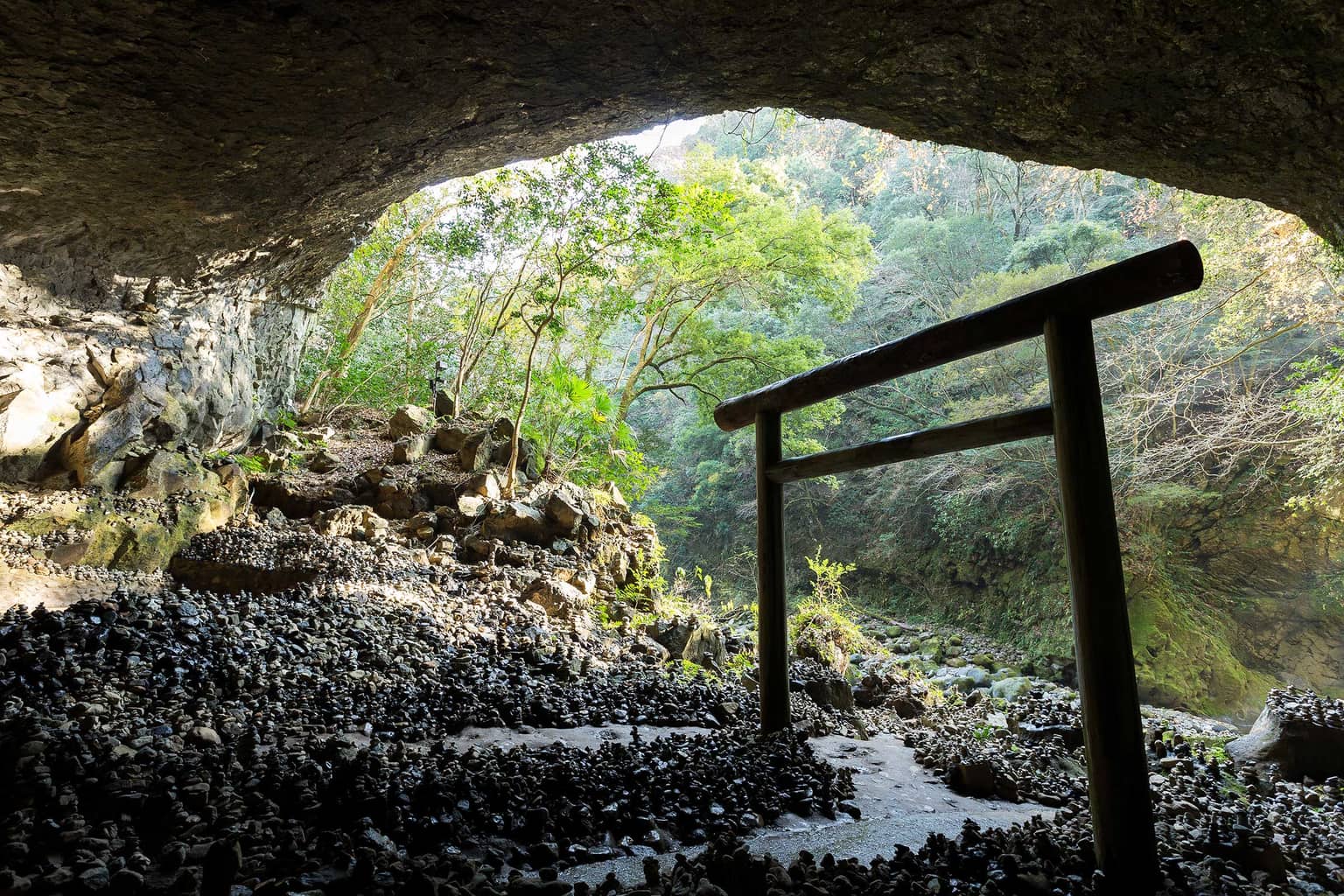
Photo: Shutterstock
Spirituality
Kyushu has always played a central role in Japan’s spiritual or religious life. Many of the legends surrounding Japan’s ancient origins are set in Kyushu and commemorated at Shinto shrines and other sites across the island, meaning these special locations can actually be visited.
“The central shrine is separated by a gorge from Amano Iwato cave, which mere mortals are not permitted to enter”
One recommended spot to visit is the town of Takachiho and the nearby Amano Iwato Shrine. The central shrine is separated by a gorge from Amano Iwato cave, which mere mortals are not permitted to enter. But upon purification by a priest, visitors can walk around the back of the shrine to view the cave from across the gorge. Nearby stands the Kagura-den, a special stage where Yokagura dance is performed. Yokagura is a storytelling dance developed as a night-time offering to the gods. But it is also greatly enjoyed by humans. Most dancers wear masks portraying their character, nearly always a god. It is often said that the dancers undertake a ritual before performing that allows them to become their character, a god, while they are dancing. The dances are accompanied by drum, flute and chanting.
At Takachiho Shrine in Takachiho town, a 50-minute version of Yokagura is performed nightly from 8pm. Four dances are performed in a dance “hall” within the shrine’s grounds. In addition, Takachiho Shrine hosts the all-night version of Yokagura in late November.
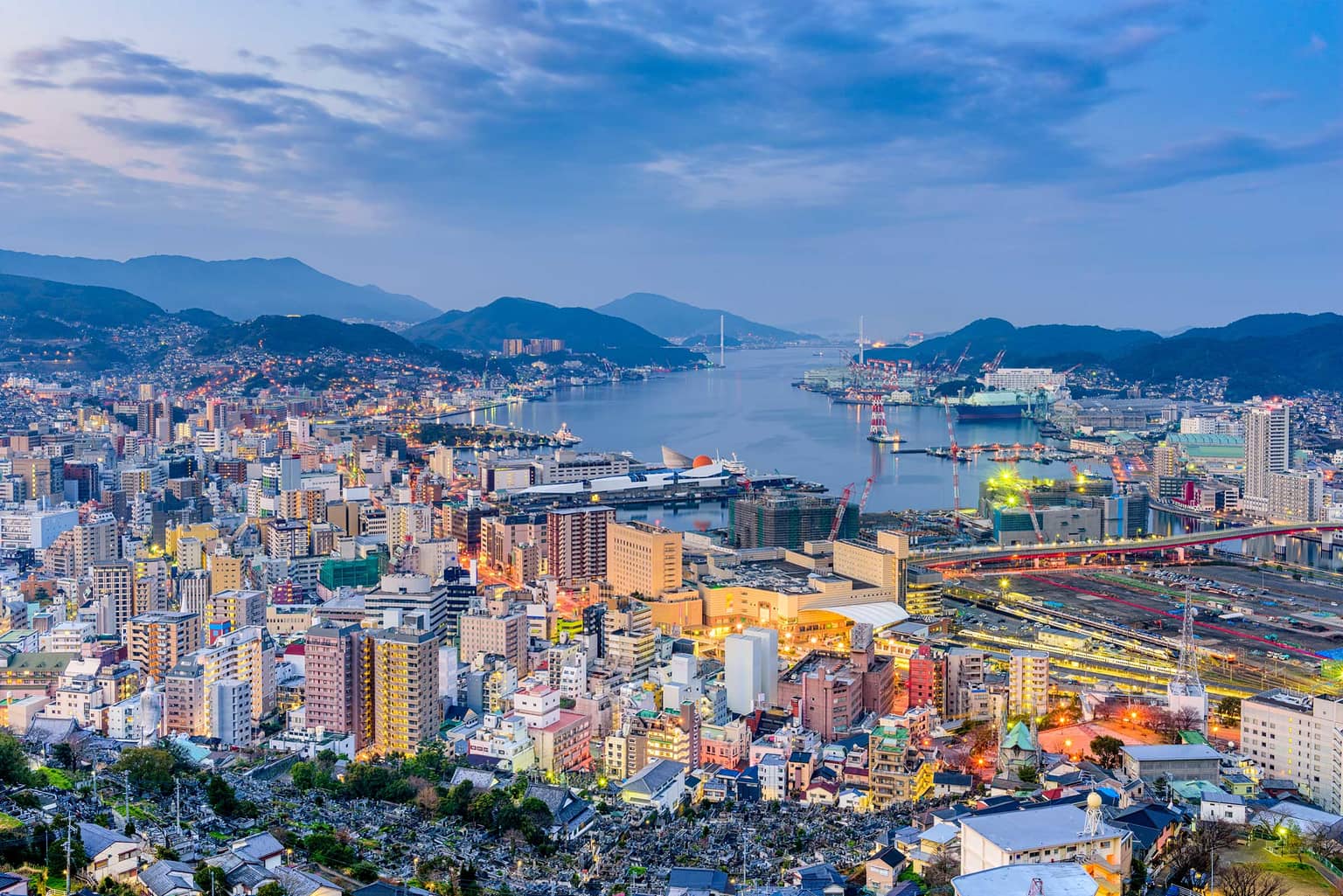
Photo: Shutterstock
Gateway to Japan
Now and in the past, Kyushu has been the cultural gateway to Japan. This is largely because of its location, being the Japanese region closest to the Asian continent. There is just about 200 kilometers of island-dotted sea between the Korean Peninsula and Kyushu, a body of water known as the Tsushima Strait. It is believed that some of the earliest humans to inhabit the Japanese islands arrived by sailing across the strait from Korea. In later generations, other cultural influences from China and Korea appear to have similarly reached Japan.
Early Influences: Culture, Religion and Technology
During the Yamato Period, increasing amounts of Chinese technology flowed to Kyushu. Exhibits at the Kyushu National Museum in Dazaifu show that this initially occurred as an exchange, with raw materials being sent from Kyushu as a tribute to the Chinese imperial court, and in return receiving Chinese finished goods, purportedly gifts from the imperial court.
“Kyushu served as a gateway for both arrivals and departures”
Not only goods but knowledge was also introduced from China. One early import was a writing system – the Japanese language had no writing system prior to the introduction of Chinese characters (kanji) in the 5th century. Japan was also the easternmost point of the Silk Road trading route that connected Asia to Europe, beginning more than 2,000 years ago – and just as the Silk Road carried Buddhism from India to China, the first Buddhist monks to reach Japan via Kyushu, arriving in 467 AD, also came from northern India. Nihon Shoki, Japan’s second oldest indigenous history, written in the early 8th century, reports that Buddhism was introduced to Japan from China in 552 AD.
As Japan began to take to Buddhist teachings and other knowledge from China, Kyushu served as a gateway for both arrivals and departures. By the late 16th and early 17th centuries, Asian and Western traders, coming to Kyushu from China, Korea, Portugal, Spain, Holland and England, were beginning to introduce all manner of new goods to Japan. Even Japanese shipbuilding was influenced by the foreign ships to call at Kyushu ports.
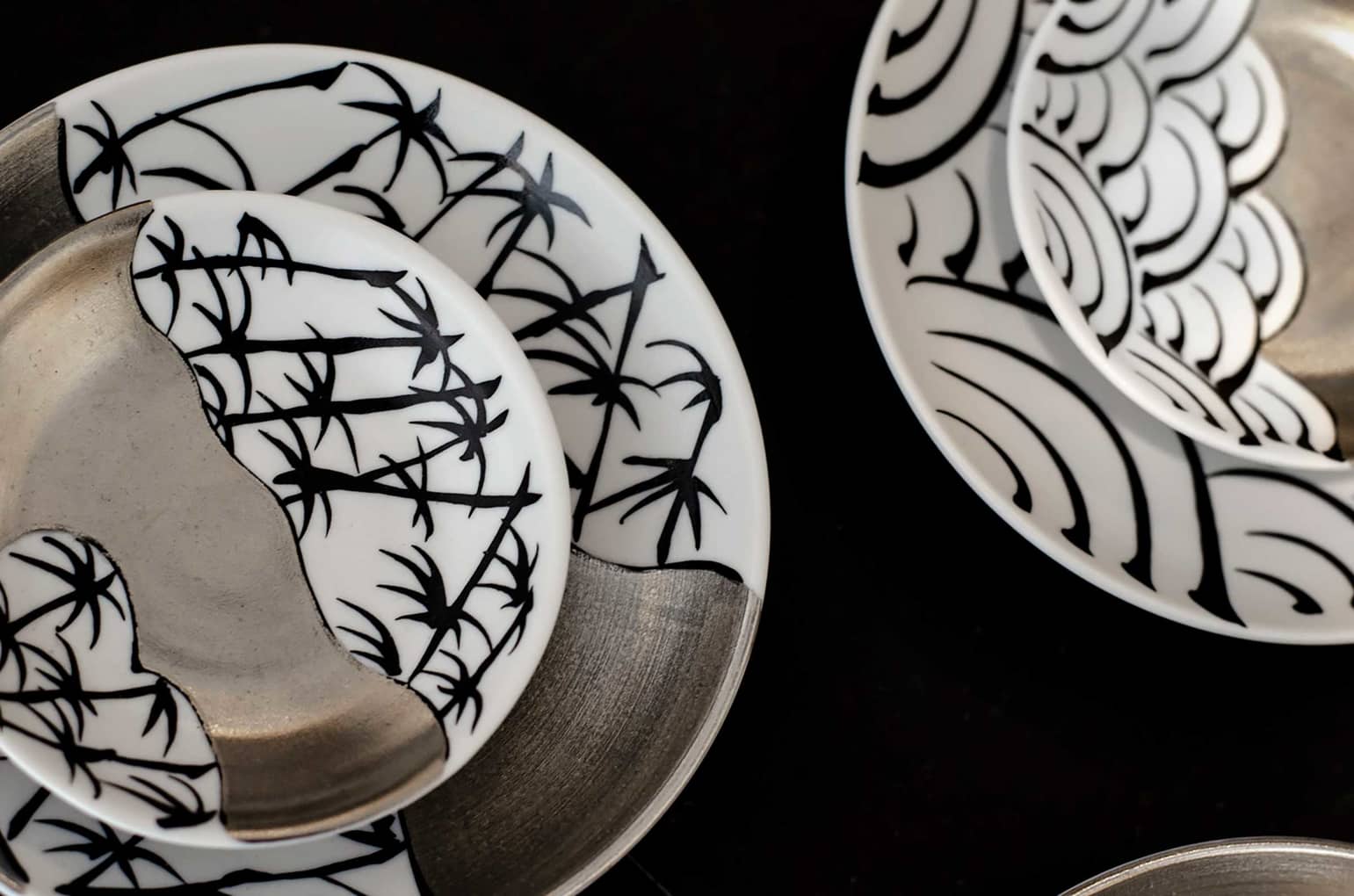
Photo by David Jaskiewicz
Kyushu’s Pottery and Ceramics
Another import from China in the first millennium was pottery glazing. Although Japan has one of the longest histories of pottery/ceramic production in the world, with some Jomon earthenware pots dated to nearly 17,000 years ago, glazing was only introduced from China in the 8th century.
One of Kyushu’s major exports to the West during the Edo Period, when most of Japan was closed to the outside world, was porcelain products. The pottery villages producing these wares grew to become among the best known in Japan. Still today, they continue to practice their craft and are delightful places to visit.
Arita is still regarded as one of the leading pottery villages of Kyushu. It is one of eight pottery villages of the former Hizen Province: Arita, Imari, Karatsu, Takeo, and Ureshino in modern Saga Prefecture and Hasami, Hirado, and Sasebo in modern Nagasaki Prefecture. Generally (although not always), the pottery, whether stoneware or porcelain, of each village, is identified by its point of origin, combined with the word yaki, meaning “ware.” For example, pottery from the town of Arita is known as Arita-yaki, while that of Karatsu is Karatsu-yaki.
The coastal castle town of Karatsu has a number of kilns and is known for its stoneware produced in earth tones. Modern pottery production here dates to 1596, even before the discovery of kaolin that began porcelain production in Kyushu, giving a solid reason for Karatsu to claim to be the origin point of Kyushu ceramics.
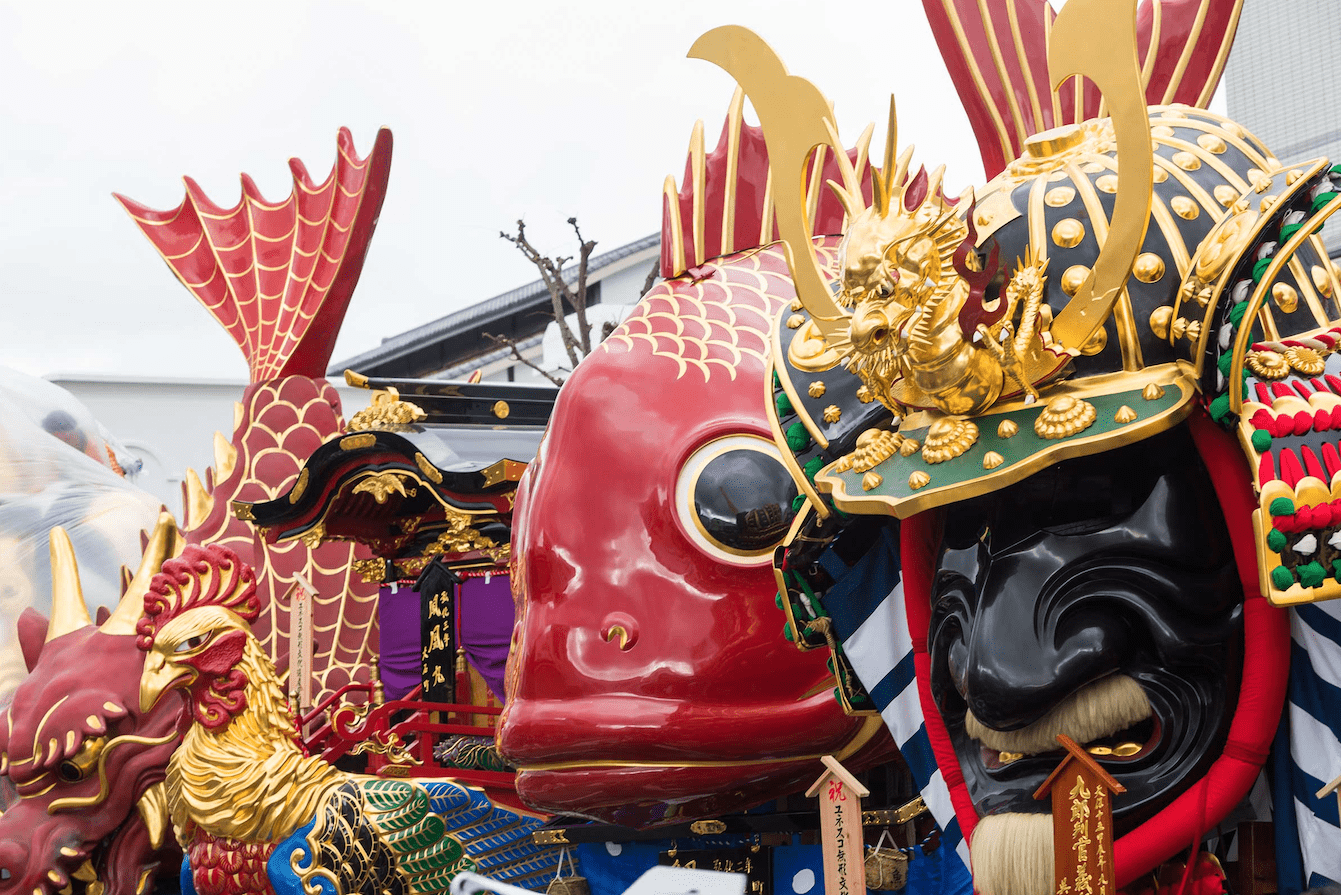
Photo: Shutterstock
Matsuri: Celebrations and Commemorations
Another type of cultural tradition that’s still practiced in Kyushu (and all over Japan) and has evolved to include modern versions is the matsuri, or festival. According to one of the priests at Kirishima Jingu shrine, originally a matsuri was any Shinto observance. By this definition, it’s possible to maintain that there are daily matsuri at most Shinto shrines. For most Japanese the concept of matsuri seems to have evolved. Matsuri, to them, is any large, usually shrine-based, event that involves broad community participation. In other words, festivals.
“These matsuri are largely centered on gratitude”
Traditional matsuri are usually centered on a shrine or temple and involve honoring and thanking gods or requesting something from them. Some matsuri are pegged to a particular date, some aspect of the annual cycle of life. Celebrations like the New Year, Setsubun, and the vernal and autumnal equinoxes are examples. Additionally, there are matsuri that developed based on some event that the community wants to commemorate, usually on an annual basis. These matsuri are largely centered on gratitude: thanks for things like a good harvest, the end of an epidemic, or for victory in battle. Sometimes the matsuri are more forward-looking, an event to petition the gods for luck or future success or to be spared natural disaster.
But whatever the purpose, matsuri are a wonderful excuse for a party. Indeed, they reveal just how much the people of Kyushu enjoy community and social events, or just a good get-together.
Sponsored Post
Updated On December 26, 2022

